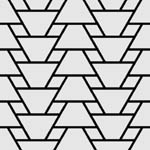
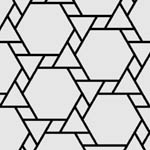
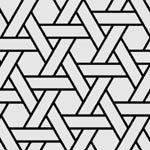
Figure 57
Figure 58
Figure 59
Now we come to the second category of bar grids: grids without crossingbars. Figure 4 shows an example of this kind of bar grid. Note that in this example all bars can be seen as combinations of three joints (three contiguous edges of the tiling). This seems to be an ideal number. With this extra limitation we can define a construction system as follows: three-bar grids are build up with bars of unit length 3, so we can define four connecting points on a bar: two endpoints and two middle-points. Bars should be connected in only one way: endpoint of one bar connected to middle-point of another bar. And every point on every bar should be connected to another point.
With this definition, many different regular grids can be designed (Figures 57 to 60; the figures show just a few examples). After working several months with this system (it turned out to be a perfect building system for domes, spheres, columns, etc.), I discovered the drawings of Leonardo da Vinci in which you can see three examples of these bar grids, probably meant to be used for roof constructions! (See Figure 61 a,b.)
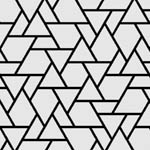
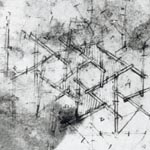
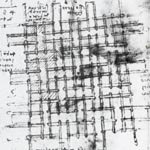
Figure 60
Figure 61a
Figure 61b